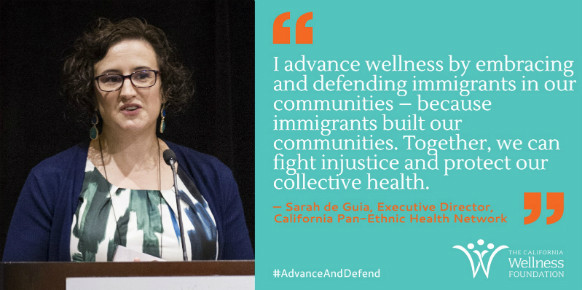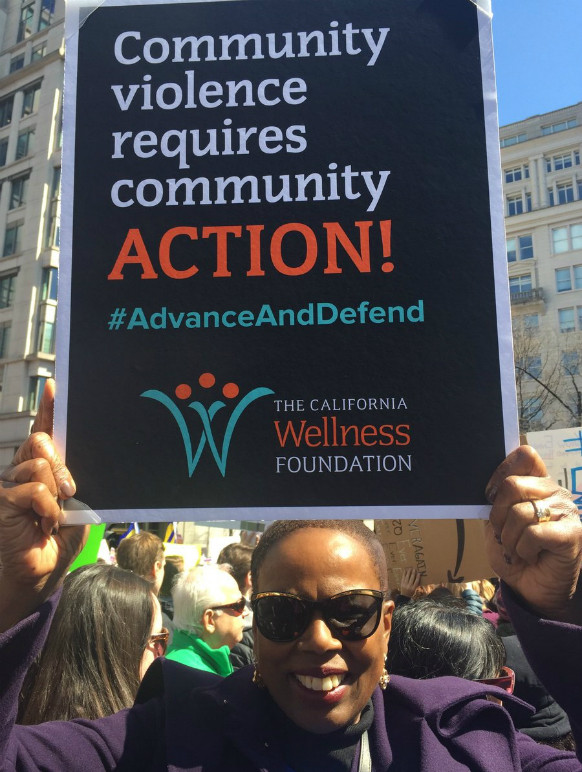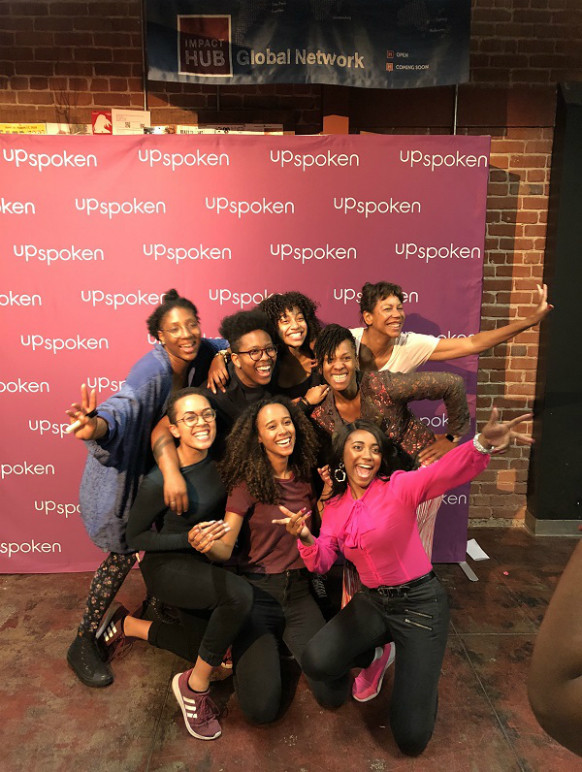Those of us who run major private foundations have the key to what many would say is true happiness: choices and the money to go with it.
And, boy, do we have choices. We get to choose the issues we want to spotlight, the groups we want to fund, how much they get, when they get it and when they don’t, how we want to use our voice, who manages our investments, who we collaborate with, and who calls the shots in our board rooms and executive suites.

We also have significant money, power, and influence with little accountability. Our work in philanthropy is often invisible, even to those we’re trying to serve. For example, when I chat with folks on my travels, very few people understand what we do. After I explained my work to a taxi driver recently, he said, “I had no idea. Sounds like a great gig.”
So I worry. Even though most days I agree I have one of the best gigs in California, I worry about how we can most effectively leverage all the assets we have at our disposal given so many choices and so little oversight.
Speaking out and showing up
In 2014, shortly after I arrived at The California Wellness Foundation—a private foundation with a mission to protect and improve the health and wellness of the people of California—I began asking everyone I met how we could do better. One response was pretty consistent: “Use your institutional voice.” While some people recognized us as strategic, thoughtful grantmakers, many felt we were missing an opportunity to use our platform, influence, and power to highlight the issues we funded. One community leader put it bluntly, “What do you stand for? And why are you so quiet?”
So we strengthened our internal strategic muscle by creating a new integrated public affairs department. Building on our legacy of investment in strategic communications, we set about modernizing our approaches. We embraced digital media and integrated communications, public policy, and community relations strategies to spotlight issues and amplify the impact of the dollars we provide to partners. In the process, we got clearer about what we stand for as a funder committed to social justice and voicing our point of view alongside our grantees.
The 2016 US Presidential election put that muscle to the test. Suddenly, the federal Affordable Care Act, a centerpiece of our health equity strategy, became truly vulnerable. Immigrant communities throughout California came under threat through attempts to derail the DACA program and through the imposition of the Muslim travel ban. The deteriorating civic dialog was creating an environment where hate speech and violence started to seem acceptable.
As a first step, we reached out to community partners to learn how best to respond to the needs of the Californians most impacted by these dramatic social and political changes. Our grantees reminded us that while we needed to defend progress at the national level, we also needed to continue to advance issues affecting health and wellness in our state.
As a result, early in 2017, our board agreed to approve grants in an expedited fashion and accelerated our grantmaking, committing $14 million to priorities that both advance and defend progress we’d made in California. We also stretched our comfort zone in terms of taking public stands and speaking out. I used my CEO position to speak from the bully pulpit, and author blogs and op-eds.

 As part of a Cal Wellness social media campaign, we shared responses from our board, staff, and community partners to the question, “How do you advance and defend wellness?”
As part of a Cal Wellness social media campaign, we shared responses from our board, staff, and community partners to the question, “How do you advance and defend wellness?”
Unfortunately, our current political environment requires that we continue to flex this new muscle: We joined in filing an amicus brief for USA v. Texas, an immigration case before the US Supreme Court; provided public comment expressing concern about the impact of the “citizenship question” added to the 2020 Census; and plan to speak out about the new federal rules on “public charge” that will penalize immigrant families who use government programs.
We know we can have an impact by being witnesses to unjust policies and showing up in solidarity with people they harm. Our programs staff have been visiting the border region in California to sit with activists and journalists in immigration courtrooms, and witness how the due process we take for granted as Americans is denied to those seeking entry to the United States.
Changing how we talk about and invest our money
One of the reasons foundations seem invisible is because we don’t talk about our money. That reticence comes straight from our culture. It makes people uncomfortable, because some of us have a lot, while many more have very little. But the fact is that the power we possess as foundations comes from the money we have. Our endowments fund our grantmaking, pay our salaries, and give us operating resources and staff expertise to exercise our voices. We’re doing good work, but it’s not enough. We’re leaving money on the table that we could put to good use.
Over the last couple years, our board has pushed us to do more with our endowment, and we’ve accepted the challenge. Our finance and grantmaking teams have partnered with the board to craft a new mission-related investing program. As a result, we’ve committed $50 million to fund mission-related investments, with up to $10 million for program-related investments, so that we can put dollars into communities where traditional lenders often refuse to invest.
We’re also taking a look at who’s managing the dollars in our endowment. There’s good, solid data showing that diverse management teams yield strong returns. And we’re extending our commitment to diversity, equity, and inclusion to include all vendors who we engage with, including our money managers.
As we continue to roll out these programs, you can bet I’ll be talking publicly about how we use our money, and why. I want that taxi driver to understand what we’re doing too.
Stepping forward
Choosing which issue to champion can also be a powerful statement—especially if it’s an area with little philanthropic investment or visibility. Cal Wellness has a two-decade legacy of funding and speaking out about community violence, and gun violence in particular. It’s a public health crisis that has impacted families and communities for far too long.
I come from one of those families. My family lost my sister Vickie to gun violence 38 years ago. Today, I have an opportunity, as the CEO of a foundation that has long been on the forefront of this issue in California, to speak out about the trauma those who are left behind experience when a loved one is shot and killed. Earlier this year, I even took to the streets in our nation’s capital: I joined millions of young people from California and around the United States in the March for Our Lives to highlight our foundation’s commitment to gun violence prevention. Sometimes just choosing to show up makes a powerful statement.
 Cal Wellness CEO Judy Belk at the 2018 March for Our Lives in Washington, DC.
Cal Wellness CEO Judy Belk at the 2018 March for Our Lives in Washington, DC.
Cal Wellness has also seized the opportunity to address two issues of particular importance to women in California: the challenges many women face in securing employment upon re-entering their communities following incarceration, and the disproportionate impact of HIV/AIDS and sexually transmitted infections on women of color. And yes, that means talking honestly about sex.
 Call Wellness is investing in a culturally appropriate public awareness campaign called Upspoken to spark honest conversations between African-American women about how to take care of their minds, hearts, and bodies.
Call Wellness is investing in a culturally appropriate public awareness campaign called Upspoken to spark honest conversations between African-American women about how to take care of their minds, hearts, and bodies.
Every day, we funders make choices about how we use our power. We can and should wield it for good, in thoughtful ways that challenge our privilege and align with the interests of the communities we want to support. We still have work to do, for sure. But I’m encouraged to see more and more leaders in philanthropy speaking up, showing up, stepping forward, and even talking about money. Let’s keep expanding our comfort zone to do the kind of transformational work we know we must do to make this world a better, more equitable place.
Support SSIR’s coverage of cross-sector solutions to global challenges.
Help us further the reach of innovative ideas. Donate today.
Read more stories by Judy Belk.

